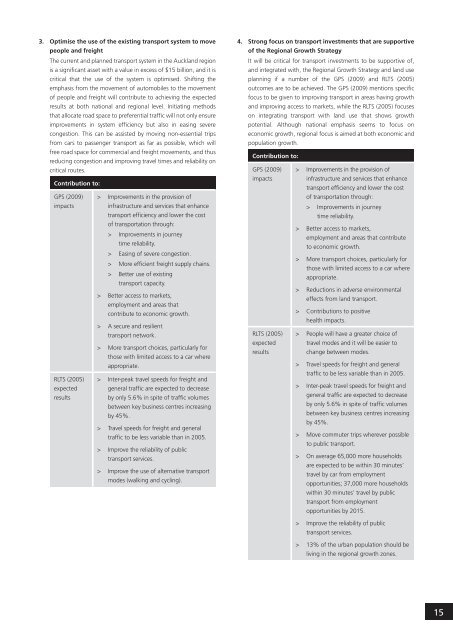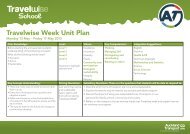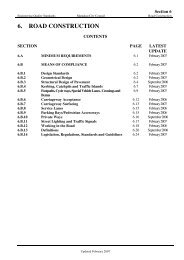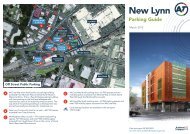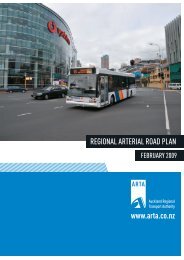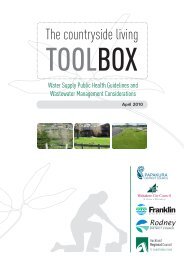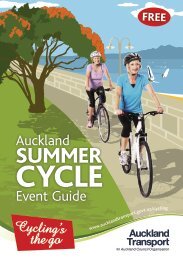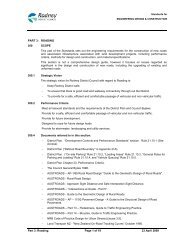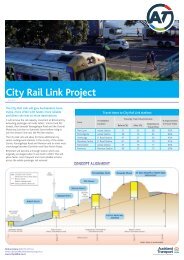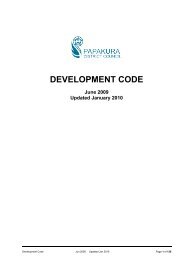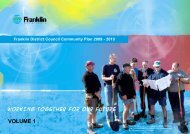Regional Land Transport Programme 2009 - 2010 (2MB) - Auckland ...
Regional Land Transport Programme 2009 - 2010 (2MB) - Auckland ...
Regional Land Transport Programme 2009 - 2010 (2MB) - Auckland ...
Create successful ePaper yourself
Turn your PDF publications into a flip-book with our unique Google optimized e-Paper software.
3. Optimise the use of the existing transport system to move<br />
people and freight<br />
The current and planned transport system in the <strong>Auckland</strong> region<br />
is a significant asset with a value in excess of $15 billion, and it is<br />
critical that the use of the system is optimised. Shifting the<br />
emphasis from the movement of automobiles to the movement<br />
of people and freight will contribute to achieving the expected<br />
results at both national and regional level. Initiating methods<br />
that allocate road space to preferential traffic will not only ensure<br />
improvements in system efficiency but also in easing severe<br />
congestion. This can be assisted by moving non-essential trips<br />
from cars to passenger transport as far as possible, which will<br />
free road space for commercial and freight movements, and thus<br />
reducing congestion and improving travel times and reliability on<br />
critical routes.<br />
Contribution to:<br />
GPS (<strong>2009</strong>) ><br />
impacts<br />
><br />
><br />
><br />
RLTS (2005) ><br />
expected<br />
results<br />
><br />
><br />
><br />
Improvements in the provision of<br />
infrastructure and services that enhance<br />
transport efficiency and lower the cost<br />
of transportation through:<br />
> Improvements in journey<br />
time reliability.<br />
> Easing of severe congestion.<br />
> More efficient freight supply chains.<br />
> Better use of existing<br />
transport capacity.<br />
Better access to markets,<br />
employment and areas that<br />
contribute to economic growth.<br />
A secure and resilient<br />
transport network.<br />
More transport choices, particularly for<br />
those with limited access to a car where<br />
appropriate.<br />
Inter-peak travel speeds for freight and<br />
general traffic are expected to decrease<br />
by only 5.6% in spite of traffic volumes<br />
between key business centres increasing<br />
by 45%.<br />
Travel speeds for freight and general<br />
traffic to be less variable than in 2005.<br />
Improve the reliability of public<br />
transport services.<br />
Improve the use of alternative transport<br />
modes (walking and cycling).<br />
4. Strong focus on transport investments that are supportive<br />
of the <strong>Regional</strong> Growth Strategy<br />
It will be critical for transport investments to be supportive of,<br />
and integrated with, the <strong>Regional</strong> Growth Strategy and land use<br />
planning if a number of the GPS (<strong>2009</strong>) and RLTS (2005)<br />
outcomes are to be achieved. The GPS (<strong>2009</strong>) mentions specific<br />
focus to be given to improving transport in areas having growth<br />
and improving access to markets, while the RLTS (2005) focuses<br />
on integrating transport with land use that shows growth<br />
potential. Although national emphasis seems to focus on<br />
economic growth, regional focus is aimed at both economic and<br />
population growth.<br />
Contribution to:<br />
GPS (<strong>2009</strong>) > Improvements in the provision of<br />
impacts<br />
infrastructure and services that enhance<br />
transport efficiency and lower the cost<br />
of transportation through:<br />
> Improvements in journey<br />
time reliability.<br />
> Better access to markets,<br />
employment and areas that contribute<br />
to economic growth.<br />
> More transport choices, particularly for<br />
those with limited access to a car where<br />
appropriate.<br />
> Reductions in adverse environmental<br />
effects from land transport.<br />
> Contributions to positive<br />
health impacts.<br />
RLTS (2005)<br />
expected<br />
results<br />
><br />
><br />
><br />
><br />
><br />
People will have a greater choice of<br />
travel modes and it will be easier to<br />
change between modes.<br />
Travel speeds for freight and general<br />
traffic to be less variable than in 2005.<br />
Inter-peak travel speeds for freight and<br />
general traffic are expected to decrease<br />
by only 5.6% in spite of traffic volumes<br />
between key business centres increasing<br />
by 45%.<br />
Move commuter trips wherever possible<br />
to public transport.<br />
On average 65,000 more households<br />
are expected to be within 30 minutes’<br />
travel by car from employment<br />
opportunities; 37,000 more households<br />
within 30 minutes’ travel by public<br />
transport from employment<br />
opportunities by 2015.<br />
><br />
><br />
Improve the reliability of public<br />
transport services.<br />
13% of the urban population should be<br />
living in the regional growth zones.<br />
15


